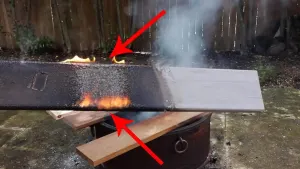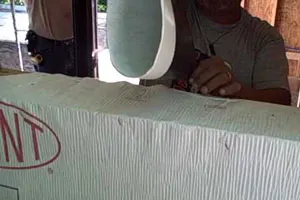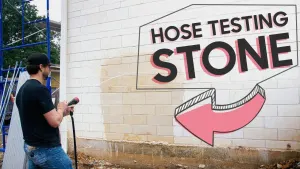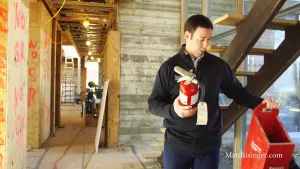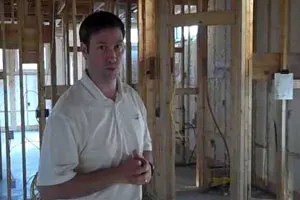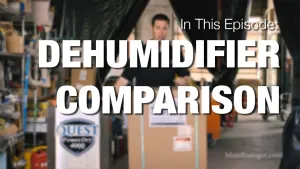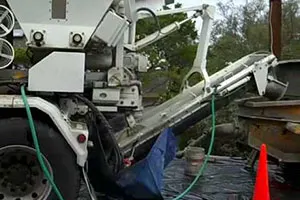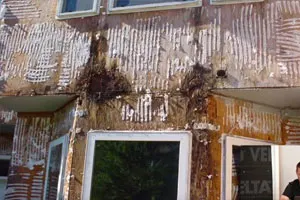
Today's runaway energy costs, natural resource shortages, and homeowners that are savvier than ever regarding energy awareness means that energy modeling and testing is a burgeoning field of interest.
Energy Modeling
Once air leakage is established, energy consumption modeling is used to estimate the sav¬ings, which is then compared to the retrofit or building cost to determine the project's feasibility. Facility managers and independent engineers provide input regarding an HVAC system, its capabilities, and anticipated upgrade costs.
Controlling the movement of these elements through a building envelope is essential for energy efficiency and indoor air quality. Air-sealing to prevent air leakage around foundations, walls, windows, curtain walls, doors, roof connections, and floors reduces problems for occupants. This includes the unwanted movement of odor, fire and smoke, tobacco smoke, contaminants that may affect health, and issues of temperature differentials and noise.
A building envelope represents the separation between conditioned and unconditioned internal and external environments. The structure is exposed to significant issues if the envelope is compromised or not properly constructed. The envelope encompasses multiple components: doors and windows, insulation, foundation, and roof. Wall systems, including brick, wood, siding, concrete, and the materials that connect these components, are critical, too. Wall systems usually have a long life expectancy, yet air infiltration, water intrusion, and temperature transfer can cause substantial and rapid problems.
A building standard that establishes extremely rigorous energy performance requirements is the Passive House standard, which includes airtight construction, continuous insulation, minimized thermal bridging, energy recovery ventilation, and solar optimization. This is the standard that mandates a blower door test result of <0.6 ACH50 to establish that the building is indeed tight. So, what exactly is a blower door test?

Blower Door Testing
The International Residential Code (IRC) has required testing for several years. However, many or even most U.S. jurisdictions did not need it. Over the past few years, certain inspectors have started requiring a blower door test. As a result, builders are becoming familiar with the requirements and have adopted tighter building practices knowing that blower door tests will be mandatory.
The actual test to measure air leakage through a building enclosure is pretty straightforward and easily performed. For the test, a calibrated fan is installed in what would be a sealed door or window while the rest of the exterior openings are closed. Turning the fan on creates a pressure difference between the exterior and interior, and as the fan sucks the air out of the home, the air will use whatever pathways available to it to escape. These leaks are what professionals are looking to measure with the blower door test. While the pressure inside is steady, the air going through the fan is the sum of all the leaks in the building. If the pressure differential remains constant, the volume of air leaking through the fan is the same as that of air circulating through the cracks and gaps in the building. (Another reason to get a blower door test is to size your furnace or air conditioner properly.)
Blower door testing is typically performed near the end of the building process of a new construction home. However, performing leakage testing at different stages of construction helps diagnose issues and fix them while the primary air barrier is accessible. Whenever you test, however, you must seal up any window or door opening that might not be filled yet, or you won't be able to pressurize the building enough to look for the leaks.
Here's a helpful guide--Everything You Need to Know About Conducting a Blower Door Test to get you started.
The Importance of Sealants
To pass that blower door test, you'll have to understand and use high-quality sealants on the building envelope. Gaps and cracks in the air barrier of a home or building allow cold or warm air, moisture, and contaminants to enter. High amounts of envelope leakage in humid climates can cause excessive moisture to infiltrate the home, making it uncomfortably sticky and susceptible to mold. In dry climates, dry air comes in during the winter months, inducing dry sinuses, static electricity, and increased spread of viruses. Leaks negatively impact energy usage, as heated or cooled air escapes buildings faster, increasing air conditioner or heater runtimes.
- How can you make sure that your building envelope is sealed tight? The following PROSOCO products have a long track record:
- The PROSOCO R-Guard fluid-applied silyl-terminated polymer (STP) system creates a monolithic barrier that keeps out air and water but is permeable so that the building can breathe.
- Joint & Seam Filler means that no mesh is required at the seams, and you can easily and seamlessly putty the material around those difficult penetrations and pinholes.
- PROSOCO's AirDam make flashing and sealing around leak-prone windows and doors easier than traditional sheet-type methods. Using them ensures that blower door test success is achieved faster.
- Cat 5 and FastFlash are ideal for post-install holes and penetrations for the field of the wall or around the rough openings, respectively, to provide a self-sealing barrier.
- Joint & Seam and FastFlash can be used for foundations, and because they stick to both concrete and wood, it's the perfect sealants to use in those transition parts.
- If you make penetrations in the envelope at the last minute, Joint & Seam Filler's embedded fiberglass spans bigger joints. It's the one tool that every builder should have in their truck or their toolbox for last-minute sealing.
To truly gain control of the building envelope, air should come in when and where we want it. We're building tight houses for better indoor air quality and for fewer problems in the future from air leakage, which can bring humidity and microbial growth. When building that tight envelope, we must also provide a common-sense strategy for homeowners to refresh the air. Sealants, building science, and energy testing are critical elements of taking control of the envelope and creating the best possible air quality environment for your customers.

 Share on facebook
Share on facebook Tweet
Tweet Email
Email Share on Linkedin
Share on Linkedin

